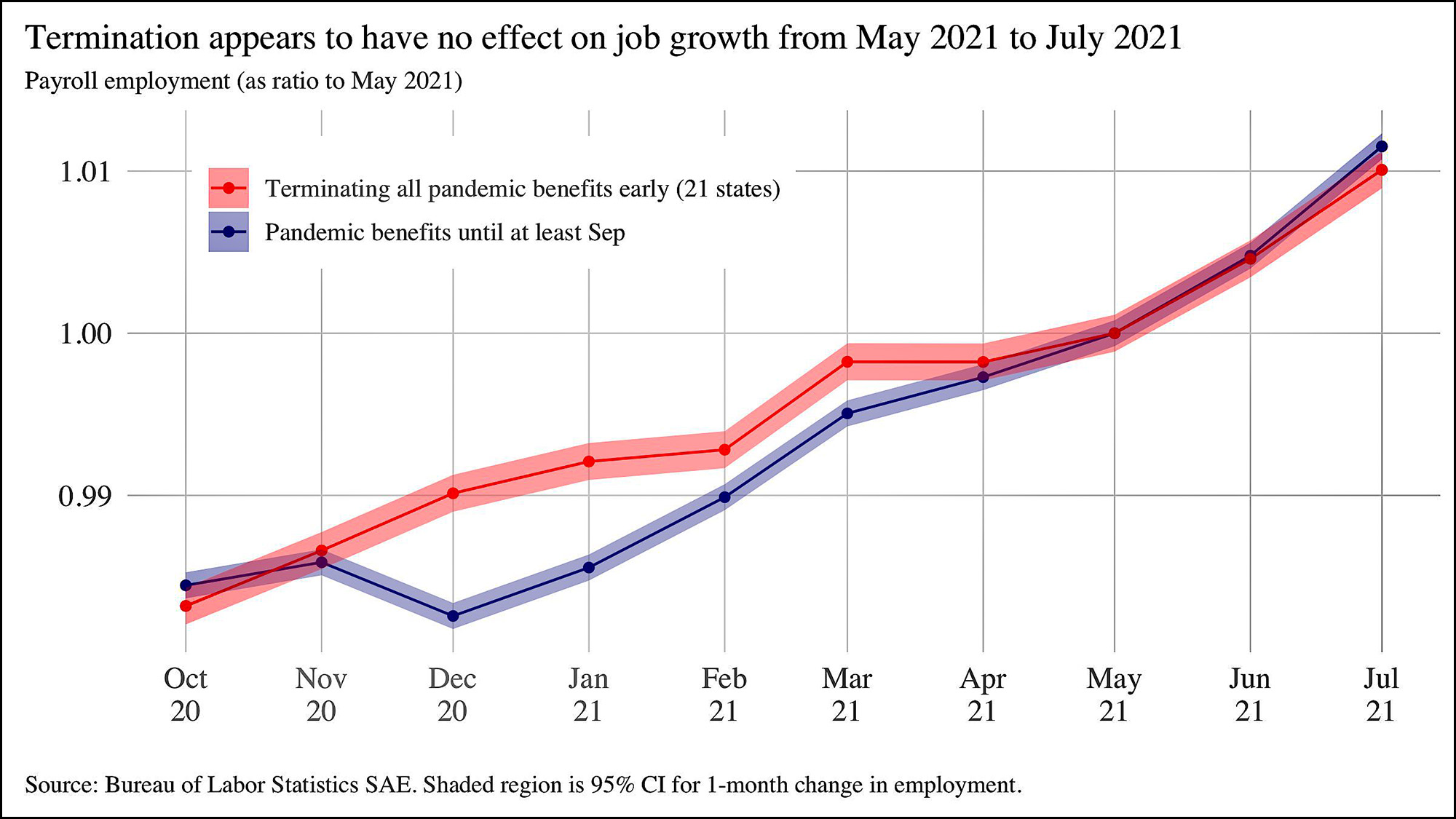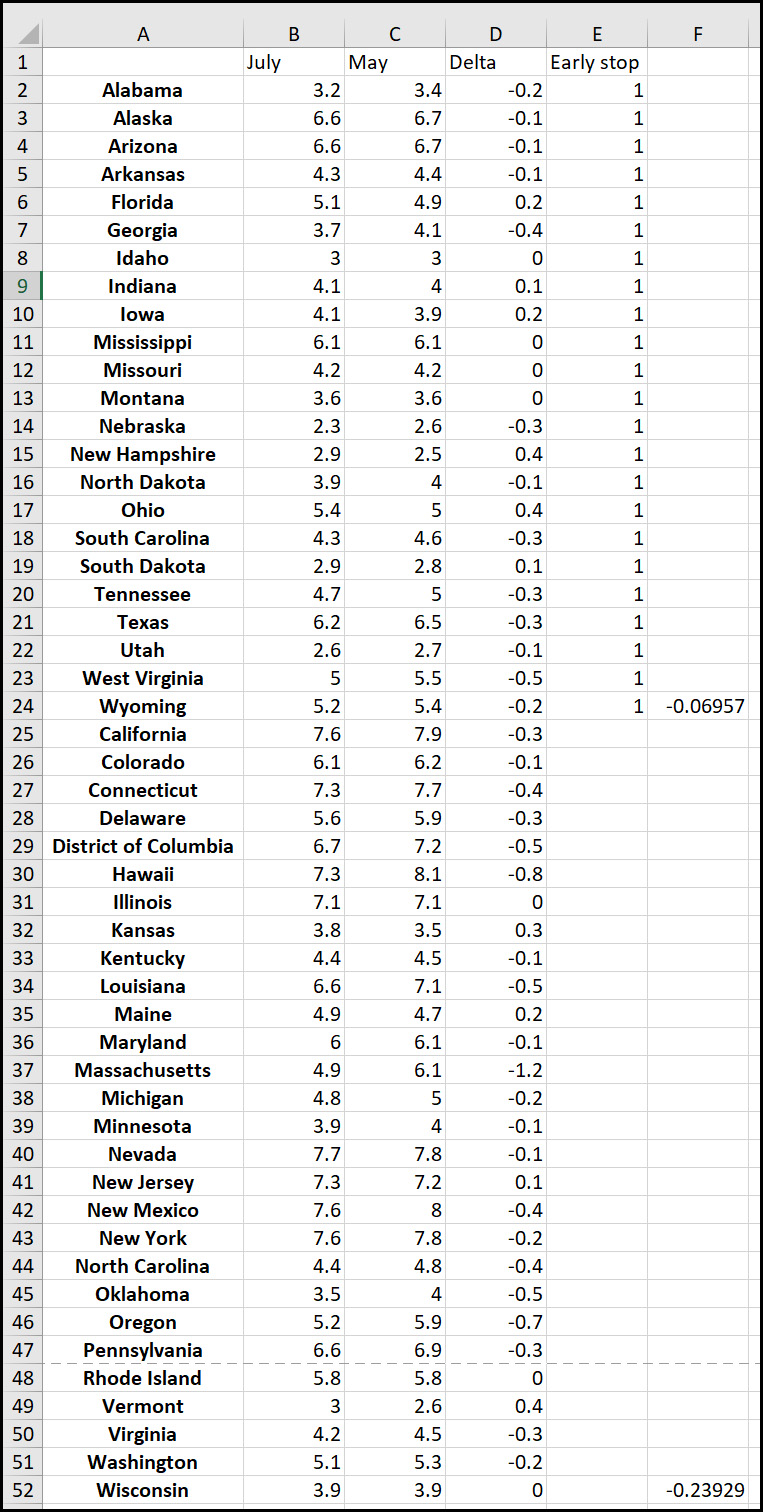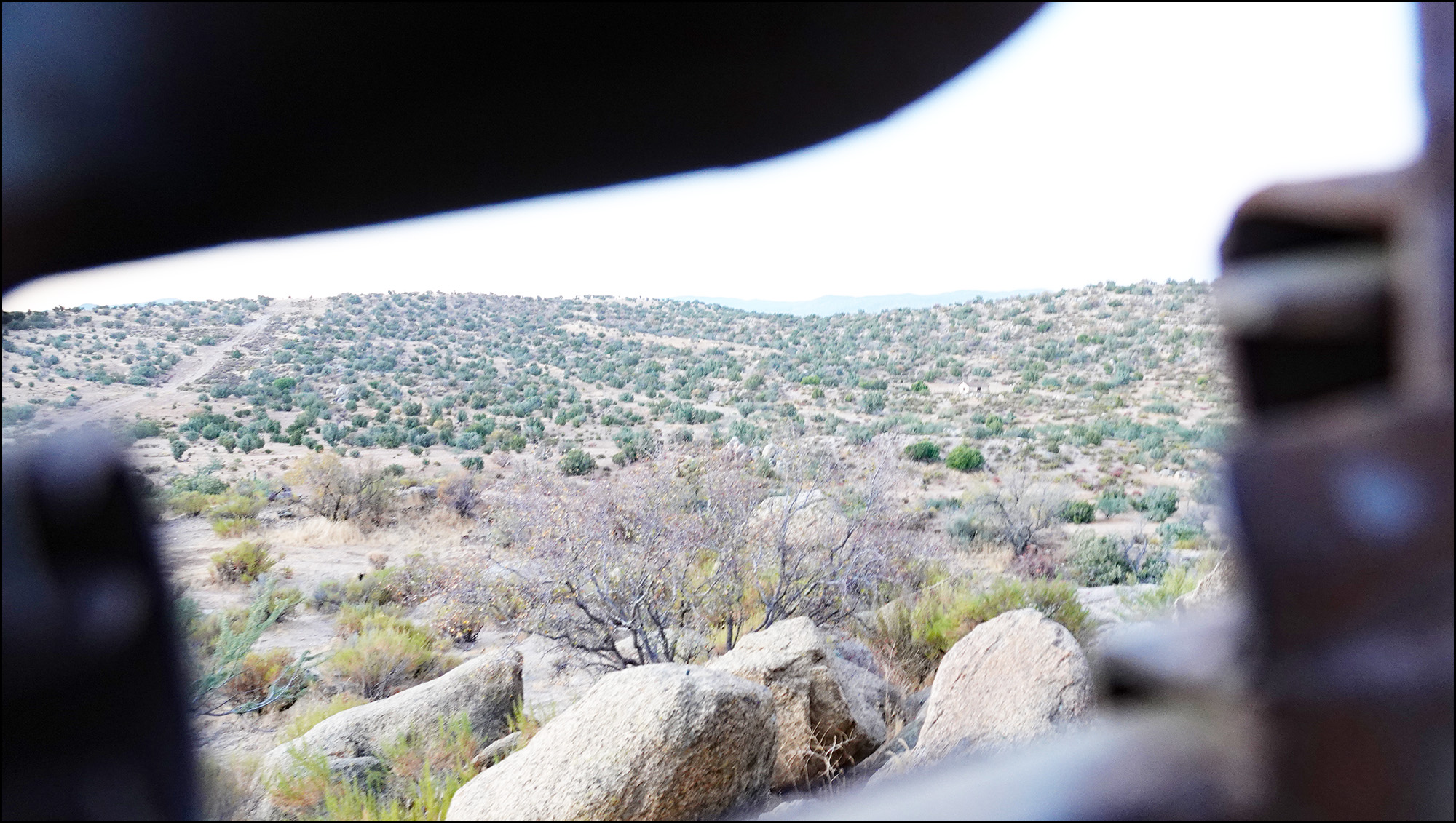Today the Washington Post runs a story that just never gets old:
A growing number of Americans are relying on dollar stores for everyday needs, especially groceries, as the coronavirus pandemic drags into its 18th month....Analysts say the explosive rise of dollar stores is yet another example of how the pandemic has reshaped the economy and widened the gulf between the wealthiest and poorest Americans. Rising grocery prices — inflation is up 5.4 percent from last year — coupled with disproportionately high job losses among low-income workers have left many of the most vulnerable Americans in even worse shape.
....The pandemic, though, ushered an influx of new shoppers — including many who had previously been able to buy in larger, more cost-efficient quantities at big-box chains. But with smaller paychecks and rising prices, they say it’s no longer feasible to stock up elsewhere.
I've seen this same story during recessions, during expansions, and now during a pandemic. And it seems plausible. But is it true?
There's no way to say for sure since most detailed income statistics take forever to be released. I'm not sure when the numbers for 2020 will be available, but it won't be anytime soon. In the meantime, though, we can make do with what we have. Here, for example, are blue-collar wages:
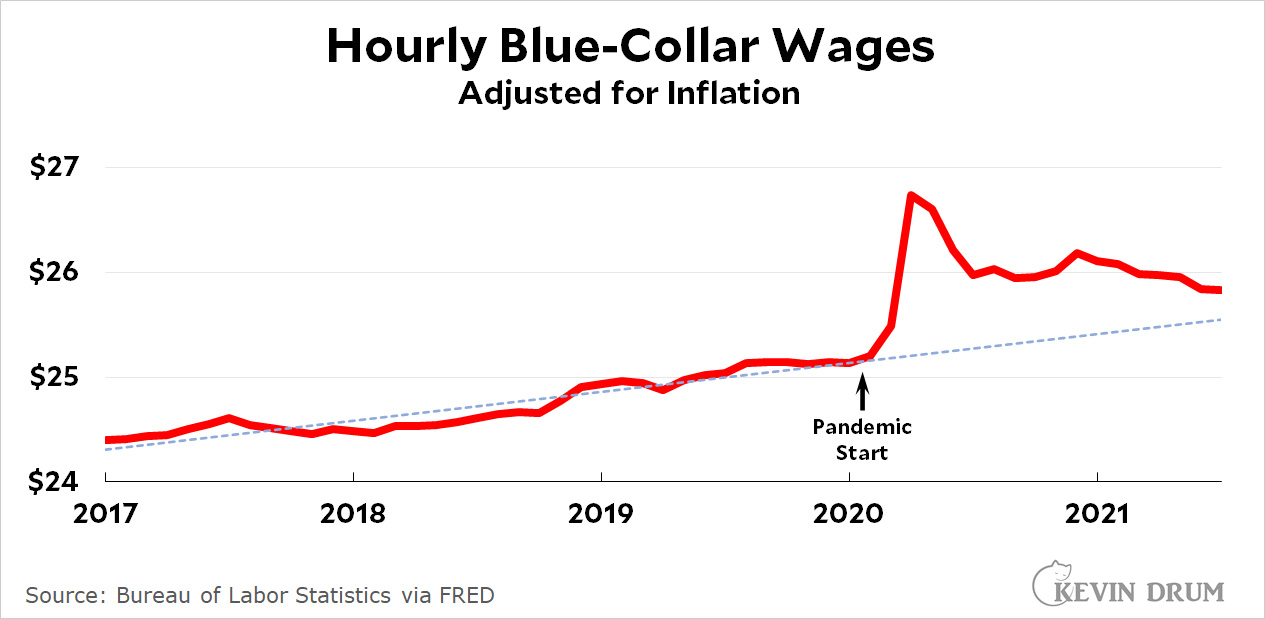
Technically these are average wages for "production and nonsupervisory employees," which accounts for about 75% of all American workers. It doesn't include zillionaires, however, so it's also a pretty good estimate of median wages for blue-collar and middle-class workers.
As you can see, median blue-collar wages have been substantially higher during the pandemic than before it, which suggests that ordinary workers are not, in fact, falling even further behind.
But this measure includes only people who are working, and plenty of people got laid off or furloughed during the pandemic. So here's a look at poverty levels:
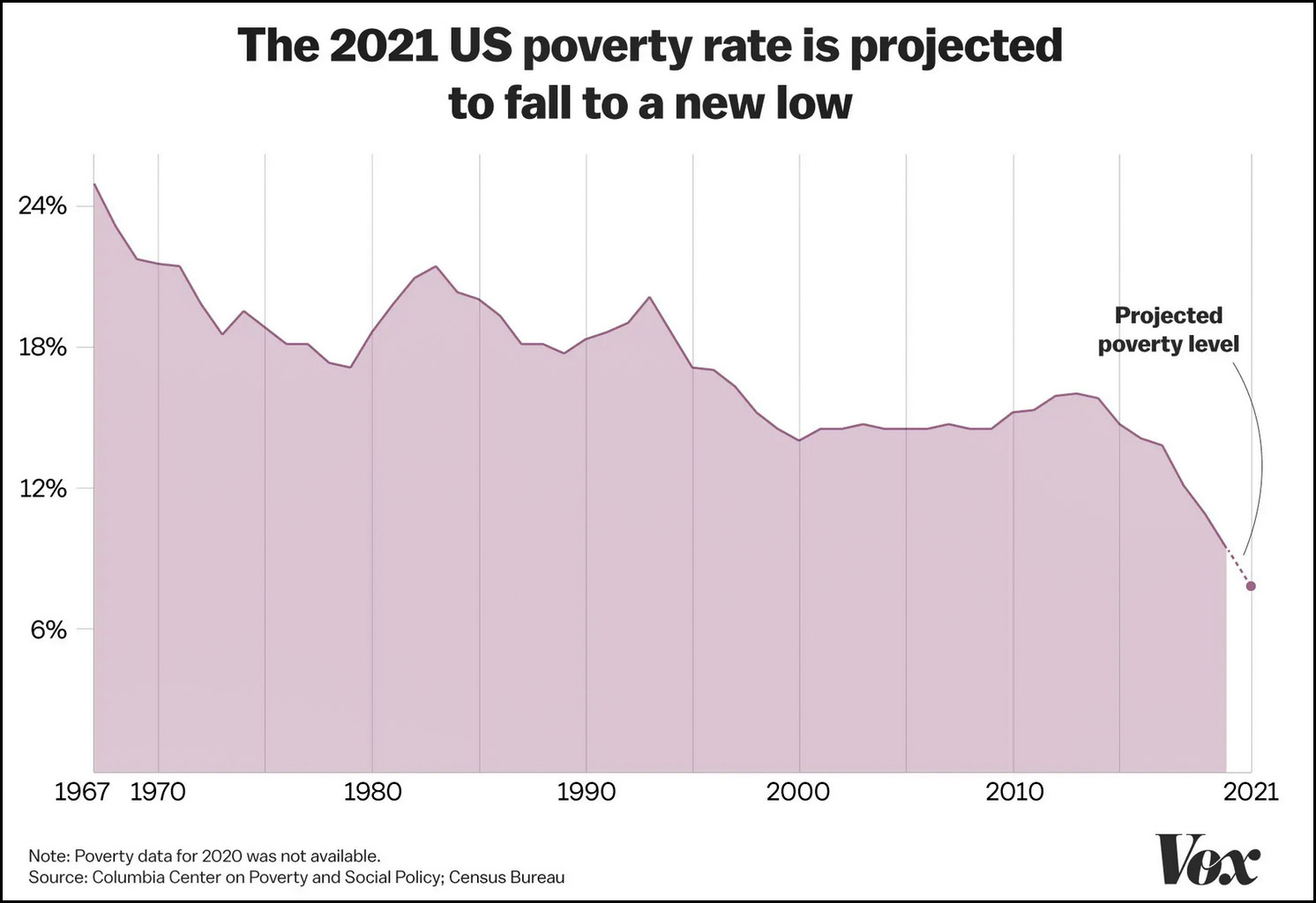
This measures the number of people at the very bottom of the income ladder. It's been falling ever since the end of the Great Recession and it continued to fall during the pandemic.
tl;dr: The average working Joe/Jane is doing fine. And the Joes and Janes at the bottom of the heap are doing OK too. This is tentative, but it suggests pretty strongly that the Walmart demographic has not deteriorated into some kind of grim Oliver Twistian dollar store demographic.
Needless to say, both of these metrics owe their happy results to the massive aid packages put in place during the pandemic. But that was the whole point of those packages: to aim a fire hose of money at the most vulnerable precisely so that they wouldn't lose ground.
And it worked. Of course it worked. If you give people lots of money, then they have more money. So why keep pretending that a huge gulf has opened up when (a) there's no evidence of it, and (b) there is evidence that the poor have done reasonably well during the pandemic? It's just too tempting a story, I guess.
POSTSCRIPT: And one other thing: the story implies very strongly that grocery prices are up 5.4% over last year. They aren't. They're up 2.5%. This is not a hard thing to get right.


